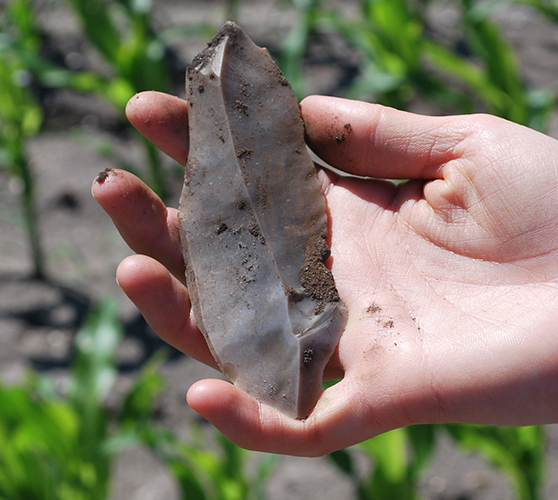Long Blades as markers of long-distance connections?
Dr. Mara-Julia Weber
A technological comparison between Ahrensburgian, Belloisien and Long Blade Technology
This project aims at characterising the relationship between three archaeological cultures at the end of the Final Palaeolithic in Northwest Europe, with the help of a technological comparison. It is equally intended to reconstruct the transition from a Palaeolithic to a Mesolithic way of life. The Eggstedt-Stellmoor-Gruppe of the Ahrensburgian in northern Germany, the Belloisien in the Paris Basin and northern France up to Brittany in general, as well as the Long Blade Assemblages, which are mostly recorded in the South of England, all feature so-called long and giant blades, some of which have heavily damaged edges. Concerted analysis of archaeological inventories will elucidate the extent to which the production and use of these blades, and the subsistence and mobility of the different groups mentioned, were similar in all three regions.

Thanks to a research grant of the German Academic Exchange Service and the Fondation de la Maison des Sciences de l'Homme, the methods and techniques of the production of flint artefacts at Donnemarie-Dontilly (Seine-et-Marne) in the south of the Paris Basin could be examined in 2013. The results of this study as well as related methodological considerations serve as a basis for the comparison with further sites of the Belloisien and its contemporaneous cultures (cf. Valentin et al. 2014).
Publication
B. Valentin/M.-J. Weber/P. Bodu, Initialisation and progression of the core reduction process at Donnemarie-Dontilly (Seine-et-Marne, France), site of the 'Belloisian' tradition. New interpretative key for comparisons with contemporaneous industries and Federmesser-Gruppen assemblages. Bulletin de la Société préhistorique française 111, 2014, 4, 659–678.
Research clusters
Man and Artefact
Research Priorities
Technology – Tradition and Innovation
Staff
Chiefs:
Dr. Mara-Julia Weber
In cooperation with
Prof. Dr. Boris Valentin, Université Paris 1 und UMR 7041 ArScAn, Ethnologie préhistorique
Dr. Pierre Bodu, UMR 7041 ArScAn, Ethnologie préhistorique
Funded by
Forschungsstipendium des Deutschen Akademischen Austauschdienstes und der Fondation de la Maison des Sciences de l’Homme
Projet collectif de recherche „Paléolithique final et Mésolithique dans le Bassin parisien et ses marges. Habitats, societies et environnement” (Nanterre, Frankreich)